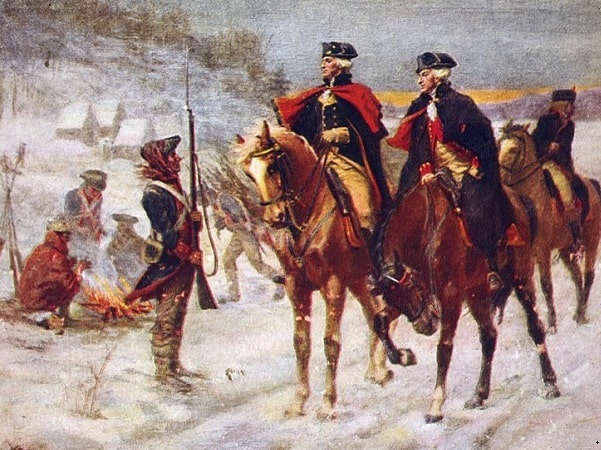Introduction: In this article, Jane Hampton Cook writes about a disinformation campaign against George Washington while he was in Valley Forge with the Continental Army. Jane is a presidential historian and author of ten books, including Resilience on Parade: Short Stories of Suffragists & Women’s Battle for the Vote and The Burning of the White House. Her works can be found at Janecook.com. She is also the host of Red, White, Blue and You.
Today, we often hear the words disinformation or misinformation. For example, during the early stages of the COVID-19 pandemic in March 2020, Chinese Communist Party officials spread disinformation when they suggested that the U.S. Army was responsible for launching COVID-19.
Dictionary.com defines misinformation as “false information that is spread, regardless of intent to mislead.” Disinformation is false information that someone spreads on purpose.

The concept of disinformation or purposeful misinformation is not new. It has been used in war and in espionage for centuries. A collection of old newspapers, such as GenealogyBank’s Historical Newspaper Archives – along with other original sources in the historical record – occasionally allow us to sort the truth from disinformation.
One such example involves George Washington during the Revolutionary War.
While in winter camp at Valley Forge in early 1778, Washington was shocked to discover an article in the Pennsylvania Ledger that was published on 24 December 1777.

The introduction explained that:
“The Printer has received from New-York a few copies of an intercepted letter from General Washington to his Lady [Martha Washington], dated June 24, 1776, which he is now selling at his shop in Market Street. The following is an extract.”
Washington was horrified to learn that this letter was circulating in New York as a handbill, which was a one-page publication akin to a flyer today. Handbills, like newspapers, were circulated in taverns and shops.
Among the many shocking statements in this letter was a passage indicating that Washington opposed independence on 24 June 1776, a mere ten days before the Continental Congress issued the Declaration of Independence on 4 July 1776:
“The only true interest of both sides is reconciliation; nor can there be a point in the world clearer, than that both sides must be losers by war, in a manner which even peace will not soon compensate for. We must, at last, agree and be friends; for we cannot live without them, and they will not without us.”
The letter referred to a curious coup:
“My attention is this moment called off to the discovery, or pretended discovery, of a most wild and daring plot. It is impossible, as yet, to develop the mystery in which it either is, or is not, supposed to be involved.”
This letter seemed to suggest that Washington was involved in a disinformation campaign:
“No doubt it will make a good deal of noise in the country; and there are some who think it useful to have the minds of the people kept constantly on the fret by rumors of this sort.”
This letter also included something curious for Washington, a gentleman known for his honesty:
“Thus much only I can find out with certainty, that it will be a fine field for a war of lies on both sides… But why should I tease you with tedious details of schemes and views which are perpetually varying?”
As soon as he saw this article in the Pennsylvania Ledger, Washington knew that this letter was a lie. How did he know? He never wrote a letter to Martha on 24 June 1776. The letter published in the newspaper was a forgery.
This letter was a war of lies, a plot of disinformation.
How did George Washington respond? On 15 February 1778 he wrote to his friend Richard Henry Lee:
“The Enemy are governed by no principles that ought to actuate honest men – no wonder then that forgery should be amongst their other crimes – I have seen a letter published in a handbill at New York, and extracts of it republished in the Philadelphia paper, said to be from me to Mrs. Washington, not one word of which did I ever write.”
But then this war of lies grew worse. As time wore on, General Washington learned that there was more than one forged letter. This one article of disinformation in the Pennsylvania Ledger turned out to be part of a larger disinformation campaign spread by handbills, pamphlets and newspapers.
Explore over 330 years of newspapers and historical records in GenealogyBank. Discover your family story! Start a 7-Day Free Trial
